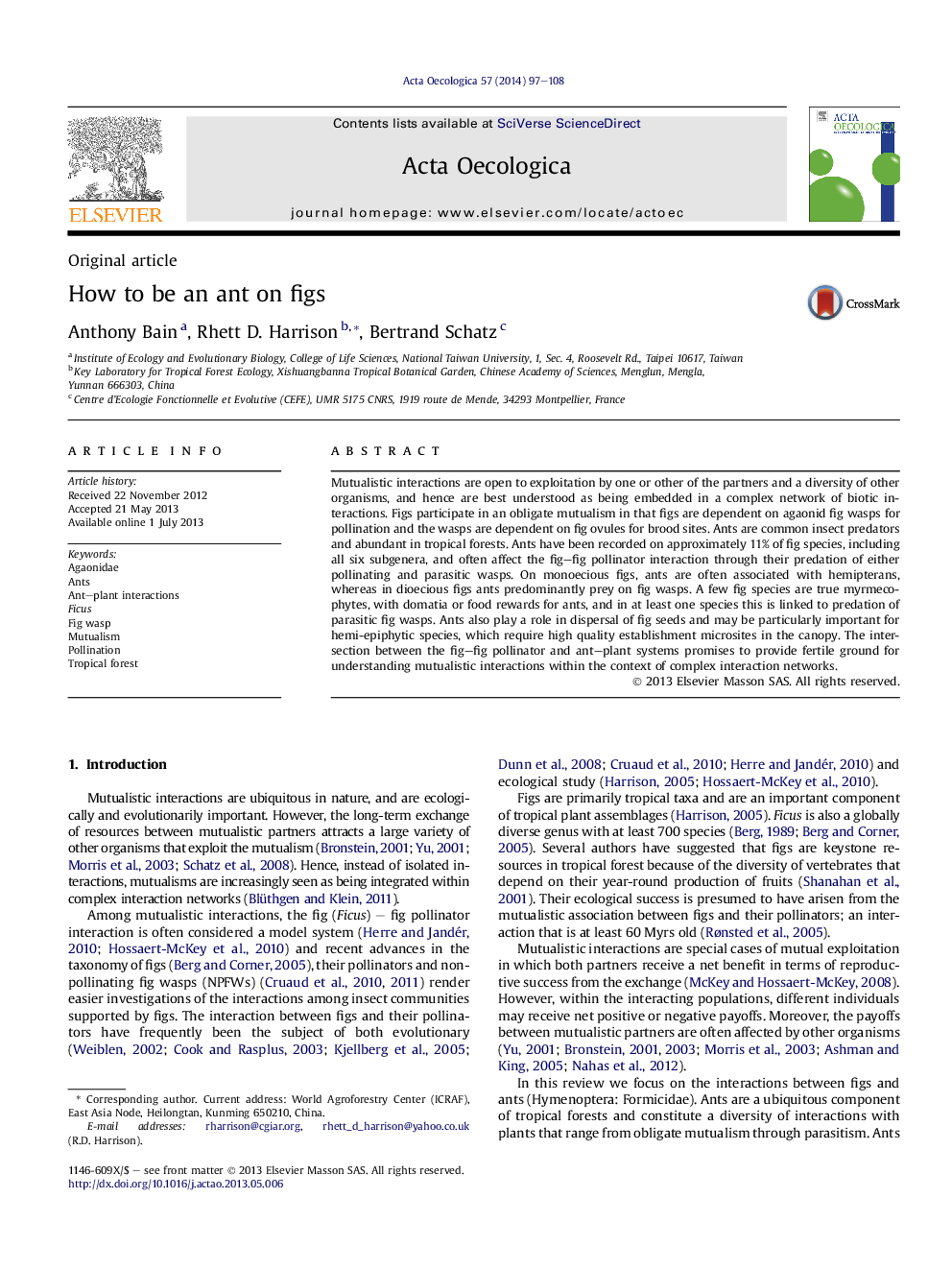| کد مقاله | کد نشریه | سال انتشار | مقاله انگلیسی | نسخه تمام متن |
|---|---|---|---|---|
| 4381044 | 1617714 | 2014 | 12 صفحه PDF | دانلود رایگان |
عنوان انگلیسی مقاله ISI
How to be an ant on figs
ترجمه فارسی عنوان
چگونه می توانم یک مورچه در انجیر باشد
دانلود مقاله + سفارش ترجمه
دانلود مقاله ISI انگلیسی
رایگان برای ایرانیان
کلمات کلیدی
موضوعات مرتبط
علوم زیستی و بیوفناوری
علوم کشاورزی و بیولوژیک
بوم شناسی، تکامل، رفتار و سامانه شناسی
چکیده انگلیسی
Mutualistic interactions are open to exploitation by one or other of the partners and a diversity of other organisms, and hence are best understood as being embedded in a complex network of biotic interactions. Figs participate in an obligate mutualism in that figs are dependent on agaonid fig wasps for pollination and the wasps are dependent on fig ovules for brood sites. Ants are common insect predators and abundant in tropical forests. Ants have been recorded on approximately 11% of fig species, including all six subgenera, and often affect the fig-fig pollinator interaction through their predation of either pollinating and parasitic wasps. On monoecious figs, ants are often associated with hemipterans, whereas in dioecious figs ants predominantly prey on fig wasps. A few fig species are true myrmecophytes, with domatia or food rewards for ants, and in at least one species this is linked to predation of parasitic fig wasps. Ants also play a role in dispersal of fig seeds and may be particularly important for hemi-epiphytic species, which require high quality establishment microsites in the canopy. The intersection between the fig-fig pollinator and ant-plant systems promises to provide fertile ground for understanding mutualistic interactions within the context of complex interaction networks.
ناشر
Database: Elsevier - ScienceDirect (ساینس دایرکت)
Journal: Acta Oecologica - Volume 57, May 2014, Pages 97-108
Journal: Acta Oecologica - Volume 57, May 2014, Pages 97-108
نویسندگان
Anthony Bain, Rhett D. Harrison, Bertrand Schatz,
